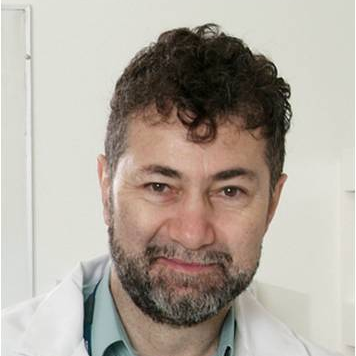Advances in Ophthalmic Biomaterials
A special issue of Journal of Functional Biomaterials (ISSN 2079-4983).
Deadline for manuscript submissions: closed (31 March 2013) | Viewed by 72607
Special Issue Editors
Interests: hydrogels; polymers; contact lens; drug delivery
Special Issues, Collections and Topics in MDPI journals
Interests: tissue engineering; ocular surface reconstruction; calcification of hydrogels; interpenetrating polymers networks; self-healing hydrogels; artificial corneal endothelium; aneurysmal rupture; adventitial collagen; photochemical crosslinking; mechanical reinforcement; proteolytic resistance; designing therapeutic strategies
Special Issue Information
Dear Colleagues,
After half of a century, the field of ophthalmic biomaterials has become firmly established as an integral and essential part of the ocular tissue engineering and regenerative ophthalmology. Biomaterials, either modified biopolymers or synthetic polymers, are used as replacements for various damaged ocular elements. Such replacements include artificial intraocular lenses, artificial corneas and corneal elements, vitreous substitutes, tube systems and canaliculi for glaucoma and lacrimal surgery, carriers for sustained release of ocular drugs, surgical adhesives, viscoelastics for ocular surgery etc. Going beyond prosthetic replacements and devices, novel types of ophthalmic biomaterials are currently being developed by manipulating both bulk structure and surface of materials to provide more complex systems able to play a role in the stimulation of target cells with an aim to heal and regenerate damaged ocular tissue. Such biomaterials serve for the creation of tissue-engineered constructs that are used in new regenerative strategies that are advanced for the treatment of eye disease and trauma.
Prof. Dr. Heather Sheardown
Dr. Traian V. Chirila
Guest Editors
Manuscript Submission Information
Manuscripts should be submitted online at www.mdpi.com by registering and logging in to this website. Once you are registered, click here to go to the submission form. Manuscripts can be submitted until the deadline. All submissions that pass pre-check are peer-reviewed. Accepted papers will be published continuously in the journal (as soon as accepted) and will be listed together on the special issue website. Research articles, review articles as well as short communications are invited. For planned papers, a title and short abstract (about 100 words) can be sent to the Editorial Office for announcement on this website.
Submitted manuscripts should not have been published previously, nor be under consideration for publication elsewhere (except conference proceedings papers). All manuscripts are thoroughly refereed through a single-blind peer-review process. A guide for authors and other relevant information for submission of manuscripts is available on the Instructions for Authors page. Journal of Functional Biomaterials is an international peer-reviewed open access monthly journal published by MDPI.
Please visit the Instructions for Authors page before submitting a manuscript. The Article Processing Charge (APC) for publication in this open access journal is 2700 CHF (Swiss Francs). Submitted papers should be well formatted and use good English. Authors may use MDPI's English editing service prior to publication or during author revisions.
Keywords
- keratoprosthesis
- IOLs
- vitreous substitution
- ocular adhesives
- ocular surface reconstruction
- corneal tissue engineering
- retinal repair and regeneration
- substrata for ocular stem cells
Benefits of Publishing in a Special Issue
- Ease of navigation: Grouping papers by topic helps scholars navigate broad scope journals more efficiently.
- Greater discoverability: Special Issues support the reach and impact of scientific research. Articles in Special Issues are more discoverable and cited more frequently.
- Expansion of research network: Special Issues facilitate connections among authors, fostering scientific collaborations.
- External promotion: Articles in Special Issues are often promoted through the journal's social media, increasing their visibility.
- Reprint: MDPI Books provides the opportunity to republish successful Special Issues in book format, both online and in print.
Further information on MDPI's Special Issue policies can be found here.







